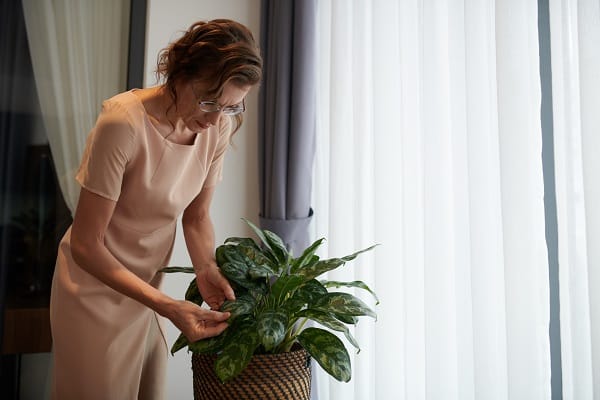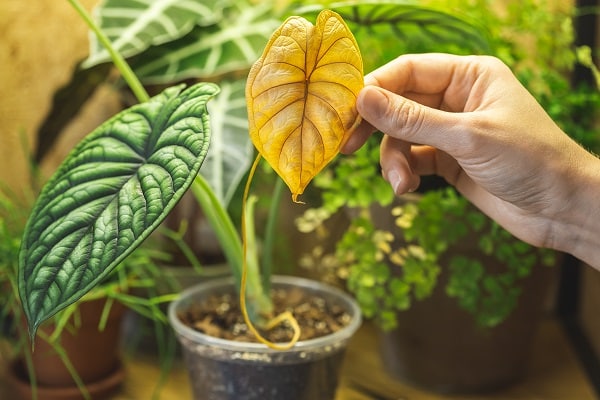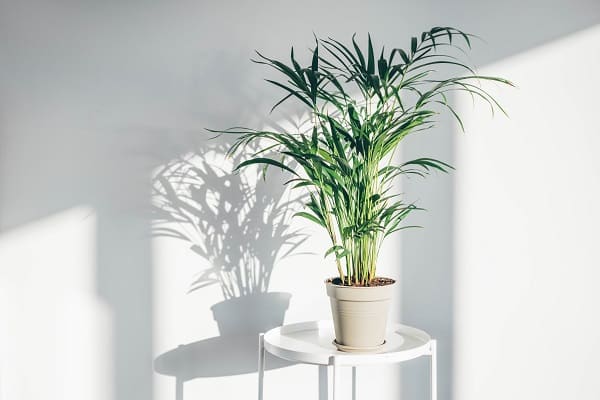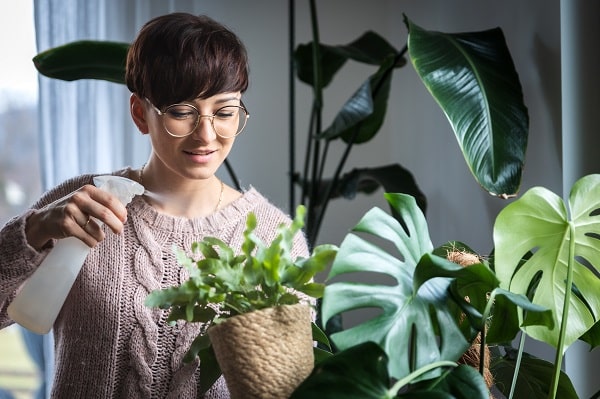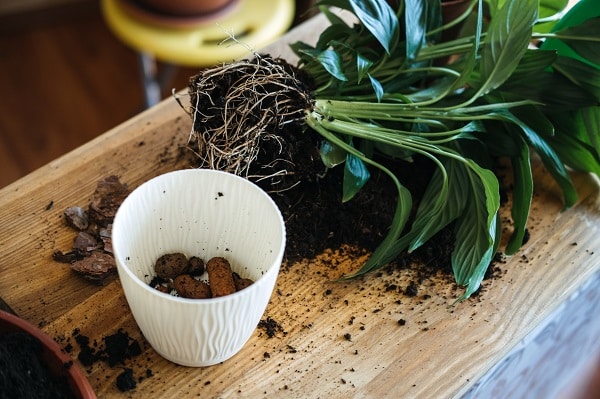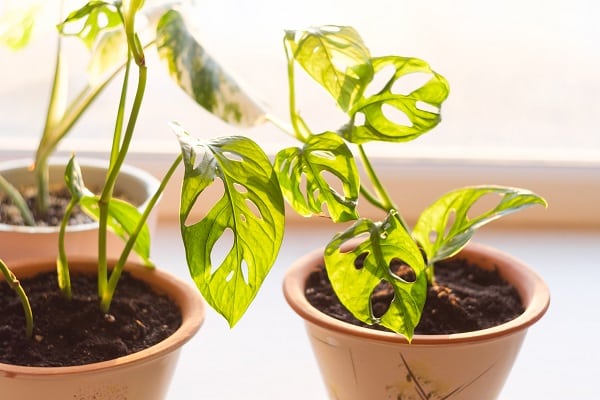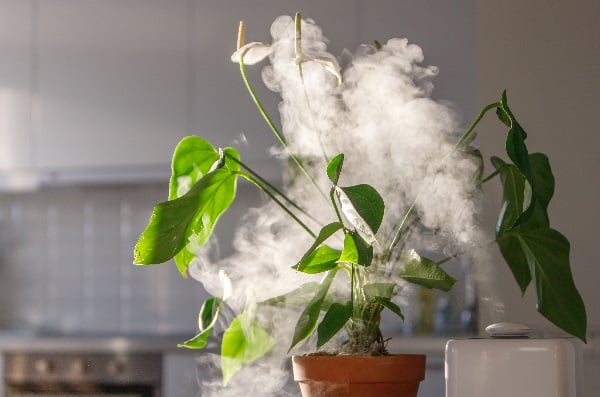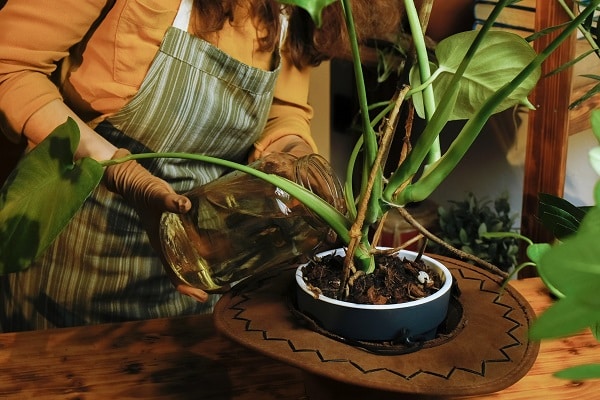Your plants have a subtle yet profound way of communicating with you. When they’re healthy, they provide lush foliage and vibrant blooms. When something is off, they let you know through a variety of signals – the most common of which is drooping. The sagging of leaves or stems can leave any plant enthusiast concerned, and rightly so. It’s a cry for help from your green companions, urging you to identify and rectify the problem. This post aims to guide you through the potential causes of why your plants are drooping, ensuring you are well-equipped to help your plants thrive!
Contents
- 1 Why Your Plants Droop
- 2 Recognizing The Signs Of Plant Stress
- 3 Assessing Your Plant’s Environment
- 4 Watering Techniques For Healthy Plants
- 5 The Importance Of Proper Drainage
- 6 Correct Lighting For Your Plants
- 7 Temperature And Humidity Considerations
- 8 Nutrient Requirements And Feeding
- 9 Follow These Tips When Your Plants Are Drooping!
Why Your Plants Droop
Plant drooping can be quite alarming for gardeners, especially if the cause is not immediately clear. This phenomenon refers to the wilting or sagging of the plant’s leaves or stems, often giving the appearance of sadness or fatigue. While some plants naturally droop during certain times of the day, a persistent droop is typically a sign of distress. It’s the plant’s way of communicating that something in its environment is causing stress.
Several reasons can contribute to plant drooping, including dehydration, overwatering, insufficient light, nutrient deficiencies, or temperature extremes. Understanding these causes is the first step to rectifying the problem. It’s important to remember that plants, just like people, have individual needs and responses to their environment. Therefore, what may work for one plant may not necessarily work for another.
Recognizing The Signs Of Plant Stress
Being able to recognize the signs of plant stress is vital to maintaining their health and longevity. Apart from the apparent symptom of drooping, other indications such as yellowing or browning leaves, leaf drop, slow growth, or a lack of blooms can also suggest plant distress. It’s important to note these symptoms, as they can provide crucial insights into the underlying issue.
Differentiating between normal plant behavior and signs of distress can sometimes be tricky. For example, some plants naturally wilt during the hottest part of the day to conserve water, but they usually perk up by the evening. If your plant is consistently drooping regardless of the time of day, it’s a strong sign that something is amiss. Being observant of these subtle differences in behavior can be the difference between a thriving plant and a struggling one.
Assessing Your Plant’s Environment
To grow and thrive, plants need a balance of several environmental factors, including light, temperature, humidity, and soil conditions. If any of these factors are not within the optimal range, your plant may start showing signs of distress, including drooping. Hence, when your plant starts to droop, the first step is to evaluate its environment.
Begin by checking the plant’s light conditions. Is your plant getting enough light, or maybe too much? Then, consider the temperature. Is it too hot or too cold for your plant species? What about humidity levels? Some plants require higher humidity, while others prefer a drier environment. Lastly, check the soil condition. Is it too dry, too damp, or lacking in nutrients? By assessing each of these factors, you can identify any environmental issues that may be causing your plant to droop.
Watering Techniques For Healthy Plants
Watering plays a crucial role in plant health. Both underwatering and overwatering can lead to plant stress and drooping. Therefore, understanding your plant’s specific watering needs and implementing proper watering techniques is key to preventing and remedying plant drooping. The rule of thumb is to water your plants when the top 1-2 inches of soil are dry. However, some plants may prefer their soil to dry out completely between watering, while others require consistently moist soil.
Remember, the frequency of watering can also be influenced by factors such as the type of plant, the size of the pot, the type of soil, and environmental conditions such as light, temperature, and humidity. By paying attention to these factors and adjusting your watering accordingly, you can help keep your plants healthy and prevent them from drooping.
The Importance Of Proper Drainage
Good drainage is essential to plant health and can be a determining factor in whether your plants thrive or droop. When plants are watered, excess water needs a way to escape to prevent the soil from becoming waterlogged and suffocating the plant’s roots, leading to root rot. Root rot is a common cause of plant drooping, as the roots are unable to take up water and nutrients effectively.
To improve the drainage of your plant setup, ensure your pots have adequate drainage holes at the bottom. Using a potting mix that drains well can also make a significant difference. Materials such as perlite, vermiculite, or coarse sand can be added to your potting mix to improve its drainage capabilities. Additionally, avoid letting your plants sit in a saucer full of water for extended periods, as this can also lead to waterlogging and root problems.
Correct Lighting For Your Plants
Light plays a crucial role in the photosynthesis process of plants, allowing them to generate food for growth. Inadequate or excessive light can lead to plant stress, causing symptoms such as drooping. Understanding the light requirements of your plant species is essential to ensure they receive the appropriate amount of light.
Most houseplants prefer bright, indirect light. However, some plants, such as succulents and cacti, thrive in direct sunlight, while others, such as ferns and snake plants, do well in low-light conditions. It’s also important to remember that the intensity and duration of light exposure can change with the seasons, so adjustments may need to be made throughout the year. If you notice your plant’s leaves are bleached or scorched, or if the plant starts drooping, it may be a sign that the light conditions need to be adjusted.
Temperature And Humidity Considerations
Just like light and water, temperature and humidity also play a crucial role in plant health. Plants can droop due to temperatures that are too high or too low or if the humidity levels aren’t right. Each plant species has its own optimal temperature and humidity range, and it’s important to provide these conditions for your plant’s health.
As a general rule, most indoor plants prefer temperatures between 65 and 75 degrees Fahrenheit during the day and a slight drop at night. Humidity needs can vary widely among plant species, with tropical plants usually requiring higher humidity levels than desert plants. If the air is too dry, a humidifier, a pebble tray with water, or regular misting can help increase humidity levels. Conversely, if the air is too humid, consider using a dehumidifier or increasing ventilation.
Nutrient Requirements And Feeding
Like all living things, plants require nutrients to grow and thrive. A lack of essential nutrients can cause a variety of health issues in plants, including drooping. Understanding the nutrient requirements of your plant species and providing them with a balanced diet is vital for their health. Most plants need a range of macro and micronutrients, which are typically available in the soil or added through fertilizers.
Macronutrients include nitrogen, phosphorus, and potassium, which are necessary for growth, energy production, and overall plant health. Micronutrients such as iron, manganese, and zinc are needed in smaller quantities but are still essential. It’s important to follow the manufacturer’s instructions when using fertilizers to avoid over-fertilization, which can be as harmful as nutrient deficiency. Regularly feeding your plants can help prevent nutrient deficiencies and keep your plants healthy and vibrant.
Follow These Tips When Your Plants Are Drooping!
Caring for plants goes beyond simply watering them; it requires keen observation and an understanding of their needs. While drooping can be a common distress signal, knowing how to identify and rectify the underlying issues is key to restoring your plant’s health. This can be something as simple as adjusting the soil’s pH levels or providing more light, or it could be a matter of ensuring your plant has an adequate water supply and a balanced diet. Properly caring for drooping plants requires patience and dedication, but following these tips can help bring them back to life!
